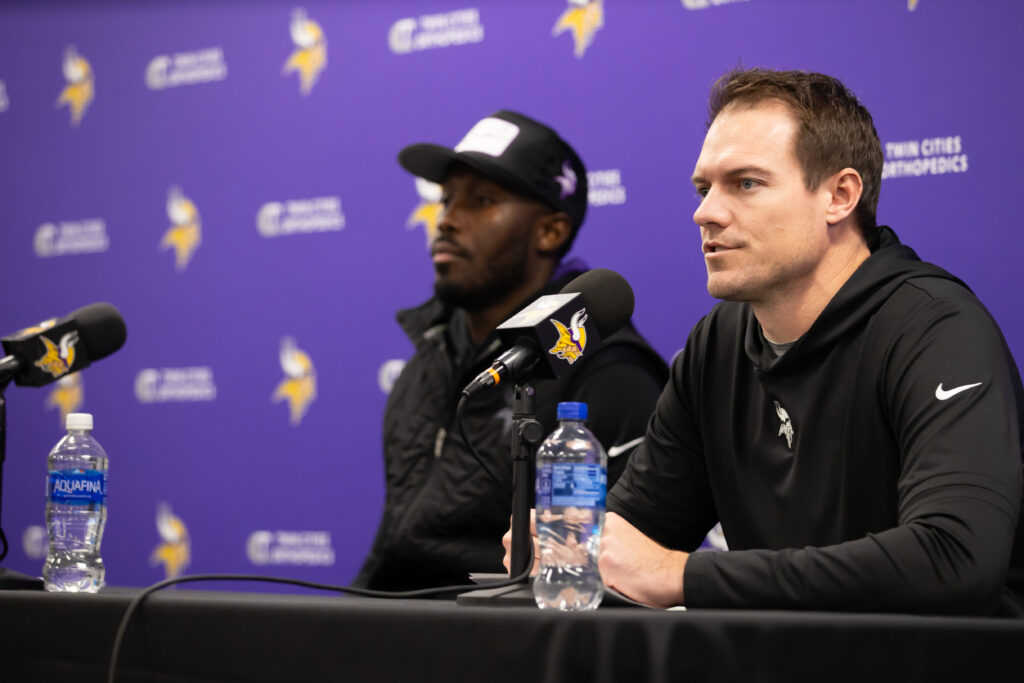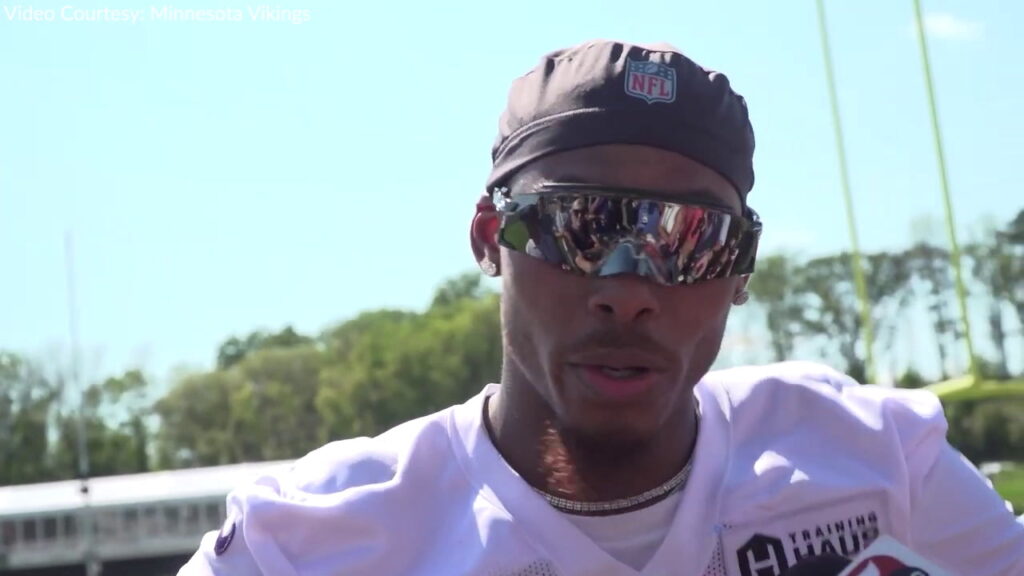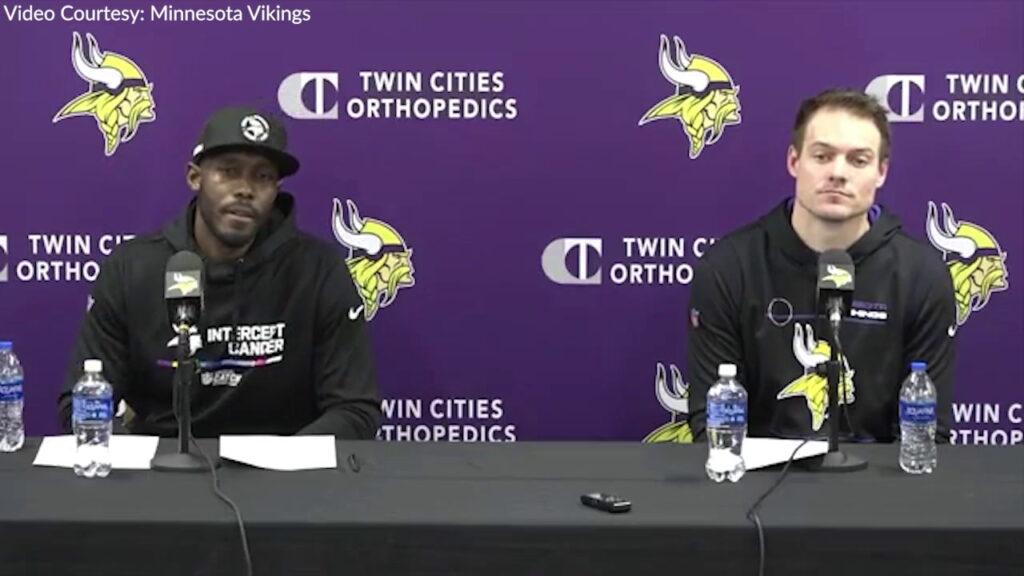There are so many different ways to analyze quarterback play that it can be incredibly difficult to pin down the best evidence to point us toward the answers about a particular QB.
Traditional stats like completion percentage, yards, quarterback rating and yards per pass attempt all have their shortcomings. Advanced stats like Pro Football Focus grade, ESPN’s QBR and Expected Points all have their blind spots as well.
Relying on intangibles can be tricky. Some of the best quarterbacks are selfish and aloof — see: Rodgers, Aaron — and some of the most mediocre QBs are great leaders and widely loved by their coaches and locker rooms.
We can’t even make sure-thing statements about the skills and style of winning QBs. Everybody is looking for the dual-threat quarterback but the representatives in the Super Bowl combined for under 300 yards rushing in 2021.
How do we factor supporting cast? Coaching? Schedule?
Quarterbacks aren’t static, either. They improve or decline over time. Rich Gannon was once a struggling Viking quarterback. Many years later, he won MVP with the Raiders. By age 29, Vinny Testaverde was 24-48 with 77 touchdowns and 112 interceptions. From age 35-38, he won 31 of 46 with 66 TDs and 47 INTs.
There are lots of QBs with the opposite career arc. Jim Everett had two top-notch statistical seasons in 1988 and 1989 and then won 34 of 104 starts the rest of his career.
Opinions on quarterbacks change vastly every year. Prior to the 2016 season, NFL coaches and executives ranked Matt Ryan 13th, four spots behind Eli Manning. Ryan won MVP that year. Blake Bortles was placed above Ryan Tannehill and Sam Bradford. Jameis Winston got equal scores to Derek Carr.
The only thing that is consistent is that the legendary quarterbacks remain legendary. Rodgers and Brady were the top two QBs heading into 2016, while Roethlisberger, Brees and Wilson weren’t far behind.
Everybody else rides the rollercoaster.
The last four years have been just that with Kirk Cousins. While his counting statistics and PFF grades have combined to produce strong results, if we look at his performances on a game-by-game basis by ESPN’s QBR (which factors game situation and has been shown to have a strong correlation to winning), you can see the ups and downs.
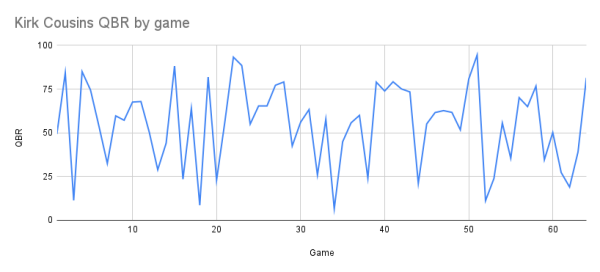
Over the last four years, the Vikings have tried lots of different strategies to get the best out of their quarterback. In 2018, John DeFilippo leaned heavily on a quick passing game that put Cousins in the shotgun and asked him to play point guard. Through the first half of the season, it worked more often than not but Cousins faded down the stretch as DeFilippo and Mike Zimmer feuded over the right way to run the offense. From Week 12 to 17, Cousins graded by PFF as the 20th best QB in the NFL and the Vikings missed the playoffs.
In 2019, Kevin Stefanski went run-heavy, ranking 30th in passing attempts. Cousins’ efficiency numbers were strong and the team improved to ninth in passing Expected Points Added but there were hints that those results would be difficult to build upon. The Vikings had the sixth highest rushing total and sixth easiest schedule in the NFL, per Pro-Football Reference’s Strength of Schedule metric. Of their 10 wins, only one came against a playoff team and that was the 9-7 Eagles.
Plus, the Vikings had a top 10 defense and Stefanski left for Cleveland after that season.
Cousins had his highest ranking by PFF grade in ‘19 and best team passing EPA of his time in Minnesota, but his QBR chart still looked similar:
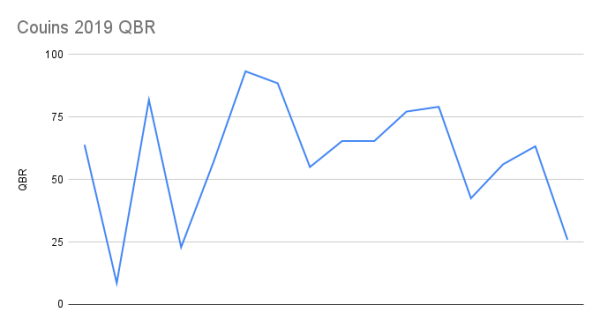
One area where Cousins’ rollercoaster has hit Kevin O’Connell’s predecessors particularly hard is in the playoff race. Over the last four years, from Weeks 12 through Week 17, the Vikings won just 10 of 23 games, ranked 19th in scoring, 16th in net yards per pass attempt and Cousins graded 20th, 9th, 15th and 14th during the “in the hunt” portion of the season.
Gary Kubiak and Klint Kubiak were both bitten by the Cousins late-season regression bug when the Vikings had chances to make the playoffs late in 2020 and 2021. Last year in games against San Francisco, Detroit, Pittsburgh, Chicago and Los Angeles, Cousins had QBRs of 34.6, 50.2, 27.3, 19.0 and 39.0. Usually a QBR in the 60 range means the quarterback played well enough to win.
Here’s how Cousins compared to Tom Brady and Aaron Rodgers in terms of running QBR last season.
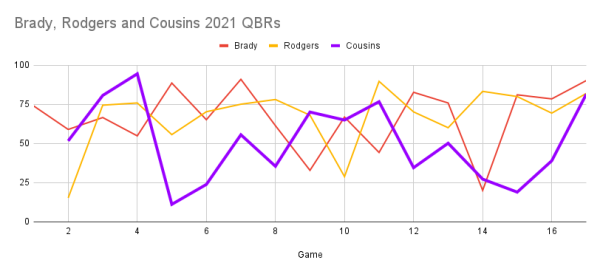
By some stats, Cousins is in the ballpark with Brady or Rodgers. He had a higher QB rating than Brady and slotted one spot behind Rodgers by PFF grade. But when game situation is factored with QBR, the distribution doesn’t look at all the same.
That doesn’t make QBR a perfect stat but it does match up with what Vikings fans have witnessed over the last four years: Extreme highs and lows. Player of the Month performances followed by disappointments.
This phenomena has made Cousins a perplexing puzzle for some of the league’s best offensive minds. He’s been coached by two-time Super Bowl representative Sean McVay, a Super Bowl-winning QB coach in DeFilippo, a Coach of The Year in Cleveland in Stefanski and a Super Bowl winner in Gary Kubiak and they have all struggled to smooth out the jagged edges of Cousins’ play.
Why might that be?
We can throw together a lot of theories. As seasons go along, circumstances change. Players get hurt and defenses adjust. The Vikings have persistently had a kryptonite, which is strong defensive lines. The 49ers, Steelers, Bears and Rams all have impressive rushers up front and the Vikings haven’t had an offensive line that can go toe-to-toe with elite rushers at any point during Cousins’ tenure.
It might also be the nature of the beast. Across town, the Minnesota Twins have tried to coax the hot and cold streaks out of Miguel Sano for years, yet he’s always been boom-or-bust. Many baseball players are the same way i.e. Dave Kingman, Ryan Howard etc. In basketball, some shooters go hot and cold over stretches while others are more consistent.
Since 2018, the Vikings are 24th in third down conversion percentage, which might hint at a certain skill or aggressive mindset that is lacking. Or it might say that he was put in too many difficult third-and-long positions.
Part of the challenge for Kwesi Adofo-Mensah and Kevin O’Connell is to figure out whether there’s a solution to this conundrum. Over the next few weeks, they will make a decision on either trading Cousins, keeping him for another year or signing him to a contract extension.
Do they think they can even out his play with better blocking? More weapons? A different scheme? And can those things be done on a shoestring budget? Do they have better numbers that point to an answer that was missed by past offensive coordinators? Could some of his ups and downs have been caused by a lack of trust from former head coach Mike Zimmer?
Reports are coming out so fast about the Vikings’ wanting to keep Cousins that there’s reason to be skeptical. The last time the Vikings extended Cousins, there was no noise until the day of the announcement. We’ll see if that changes this time. If it does and they extend him, O’Connell and Adofo-Mensah will be telling the world they believe they can solve the Cousins Rubik’s Cube.
VISIT PURPLEINSIDER.SUBSTACK.COM TO SIGN UP FOR THE PURPLE INSIDER NEWSLETTER






